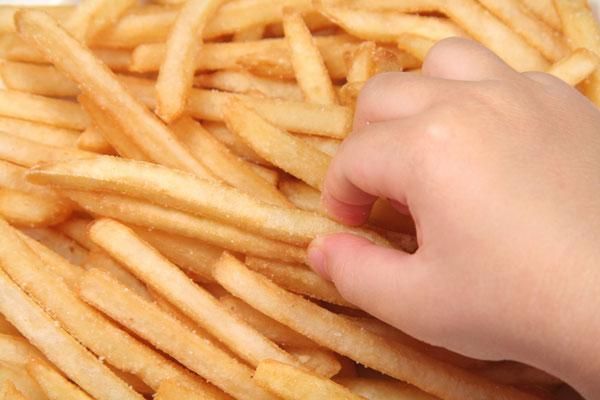Why Really Hungry People Go for Starchy Foods

Editor’s note: On Sept. 19, 2018, JAMA announced the retraction of the study that the below story is based on. Cornell University, where Wansink conducted the research, notified JAMA that, based on an internal investigation, they could not assure the validity of the studies. On Sept. 20, 2018, Wansink resigned from Cornell, after an internal investigation found that he had "committed academic misconduct in his research and scholarship, including misreporting of research data, problematic statistical techniques, failure to properly document and preserve research results, and inappropriate authorship," according to a statement from Cornell University Provost Michael Kotlikoff.
When finally given a chance to eat after hours of fasting, people tend to reach for high-calorie, starchy foods over nutritious foods, a new study finds.
In the study, 75 percent of participants placed on an 18-hour fast started their next meal with a starch (such as French fries) or a protein (such as chicken) rather than a vegetable, the researchers found. In contrast, the majority of participants who did not fast beforehand started the meal with a vegetable.
The researchers also found that over the meal, participants ate the most calories from the food they consumed first, compared with other foods on their plates, according to the study published today in the journal Archives of Internal Medicine.
The findings may explain why people who are "food insecure," or who experience uncertainly regarding whether they will be able to get enough food to meet their households' needs, are paradoxically at a higher risk for obesity, Amy Yaroch and Courtney Pinard, both of the Gretchen Swanson Center for Nutrition in Omaha Neb., write in an editorial accompanying the study.
"Food-insecure populations also experience extended periods of hunger, and thus may be more prone to over-consume calorie dense, nutrient-poor foods," Yaroch and Pinard wrote.
Starch over vegetables
Sign up for the Live Science daily newsletter now
Get the world’s most fascinating discoveries delivered straight to your inbox.
Studies on animals have examined the amount of calories consumed after fasting, but not what types of foods animals tend to chose first.
In the new study, Brian Wansink, director of the Food and Brand Lab at Cornell University, and colleagues randomly assigned 128 college students to either an 18-hour fast (from 6:00 pm at night until noon the next day) or no fast.
At lunch after the fast, participants were offered a buffet with their choice of two starches (dinner rolls and French fries), two proteins (chicken and cheese), and two vegetables (carrots and green beans). Scales in the tables measured how much food participants served themselves, and video cameras recorded the order in which participants ate the food.
Thirty-five percent of participants in the fasting group began their meal with a starch, compared with 13 percent of those who did not fast.
Just 25 percent of participants in the fasting group began their meal with a vegetable, compared with 56 percent of those who did not fast.
Participants consumed bout 47 percent more calories from the first food they ate compared with other foods.
The findings also suggest hospitals and cafeterias that make meals for food-deprived people (such as those who have fasted before a surgery) should find ways to make healthy foods more visible and enticing on the plate, and reduce the serving size of starchy foods, the researchers said.
Food insecurity and obesity
Other studies have found a link between obesityand food insecurity, Yaroch and Pinard said.
However, the new study was small and it's not clear whether the findings apply to other populations.
"This study opens the door for further research to be conducted using a more diverse study population (eg, low income, racially diverse individuals from across the lifespan), which could have further implications for the study of factors related to both food insecurity and obesity," Yaroch and Pinardwrote.
Pass it on: People tend to eat starchy foods first after fasting.
Follow Rachael Rettner on Twitter @RachaelRettner, or MyHealthNewsDaily @MyHealth_MHND. We're also on Facebook & Google+.

Rachael is a Live Science contributor, and was a former channel editor and senior writer for Live Science between 2010 and 2022. She has a master's degree in journalism from New York University's Science, Health and Environmental Reporting Program. She also holds a B.S. in molecular biology and an M.S. in biology from the University of California, San Diego. Her work has appeared in Scienceline, The Washington Post and Scientific American.











